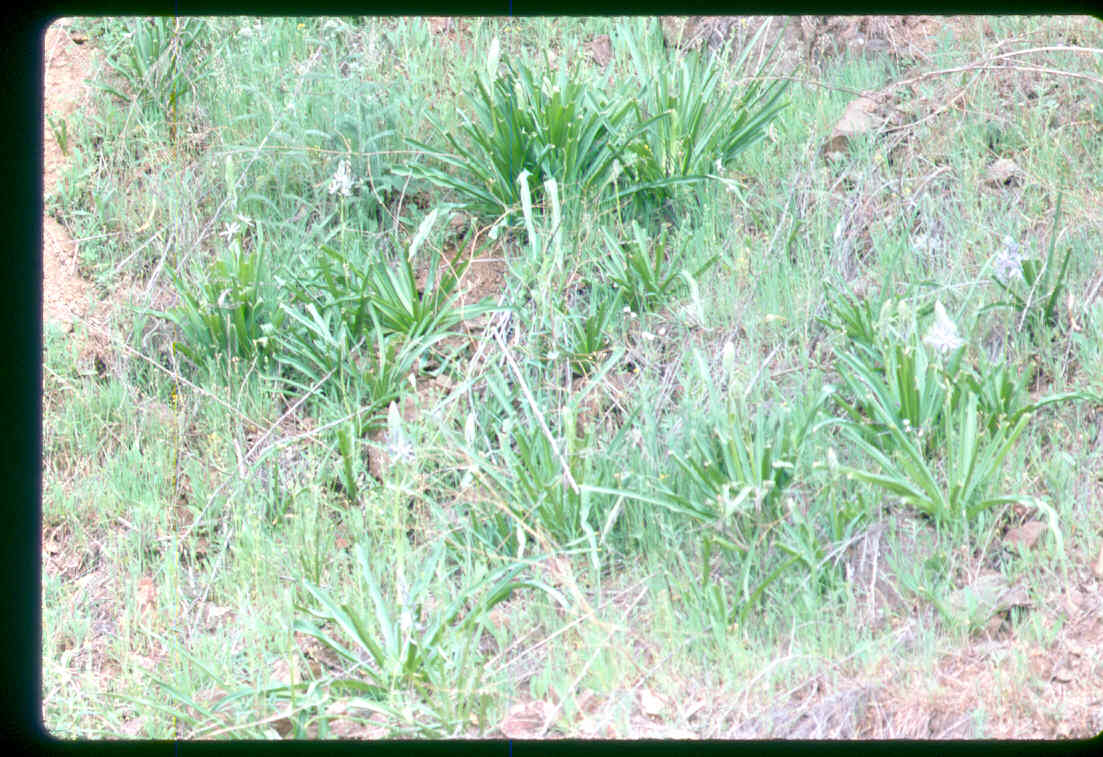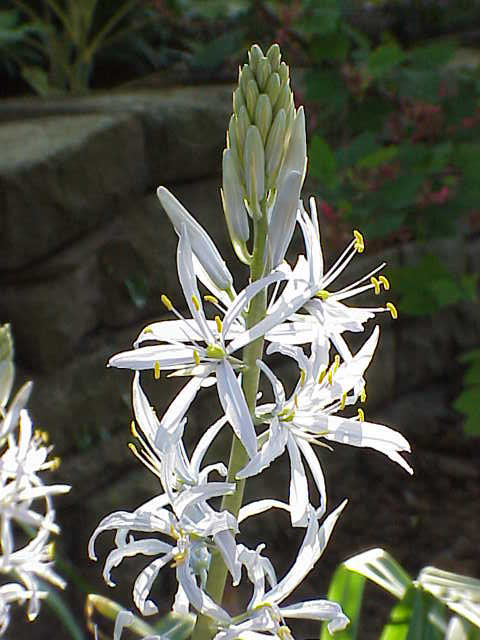Camassia cusickii on:
[Wikipedia]
[Google]
[Amazon]
''Camassia cusickii'', common name Cussick's camas, is a species of plant in the family

 The botanical name is derived from Native American words for this plant, 'quamash,' even though this plant was only a sister plant to the actual plant that was eaten. On the flower there is also a very attractive darker blue selection, '
The botanical name is derived from Native American words for this plant, 'quamash,' even though this plant was only a sister plant to the actual plant that was eaten. On the flower there is also a very attractive darker blue selection, '
USDA Plants Profile for ''Camassia cusickii'' (Cusick's camas)
{{Taxonbar, from=Q5025005 Agavoideae Flora of Idaho Flora of Oregon Endemic flora of the United States Flora without expected TNC conservation status
Asparagaceae
Asparagaceae, known as the asparagus family, is a family of flowering plants, placed in the order Asparagales of the monocots. The family name is based on the edible garden asparagus, ''Asparagus officinalis''. Those who live in the temperate c ...
(subfamily Agavoideae
Agavoideae is a subfamily of monocot flowering plants in the family Asparagaceae, order Asparagales. It has previously been treated as a separate family, Agavaceae. The group includes many well-known desert and dry-zone types, such as the agave ...
). It is native to parts of North America. ''C. cusickii'' originally appeared in horticultural journals in the late 1800s, but they been sold and cultivated for about thirty years. This plant family is not studied intensely. Seven or eight species exist in the wild, however, only three are talked about and cultivated.
Description
The ''Camassia cusickii'' has linear leaves with parallel venation and flowers in parts of three. The flowers are usually ice blue or baby blue in color, although they can be various shades of blue, cream, and white. The flowers are slightlyzygomorphic
Floral symmetry describes whether, and how, a flower, in particular its perianth, can be divided into two or more identical or mirror-image parts.
Uncommonly, flowers may have no axis of symmetry at all, typically because their parts are spirall ...
with the tepal
A tepal is one of the outer parts of a flower (collectively the perianth). The term is used when these parts cannot easily be classified as either sepals or petals. This may be because the parts of the perianth are undifferentiated (i.e. of very ...
s withering separately after anthesis
Anthesis is the period during which a flower is fully open and functional. It may also refer to the onset of that period.
The onset of anthesis is spectacular in some species. In ''Banksia'' species, for example, anthesis involves the extension ...
(baby blue in color). C. cusickii has yellow anthers
The stamen (plural ''stamina'' or ''stamens'') is the pollen-producing reproductive organ of a flower. Collectively the stamens form the androecium., p. 10
Morphology and terminology
A stamen typically consists of a stalk called the filam ...
and a fruiting pedicel
Pedicle or pedicel may refer to:
Human anatomy
*Pedicle of vertebral arch, the segment between the transverse process and the vertebral body, and is often used as a radiographic marker and entry point in vertebroplasty and kyphoplasty procedures
...
incurving-erect or slightly spreading. The capsules are not deciduous
In the fields of horticulture and Botany, the term ''deciduous'' () means "falling off at maturity" and "tending to fall off", in reference to trees and shrubs that seasonally shed leaves, usually in the autumn; to the shedding of petals, aft ...
, light brown in color, having an ovoid or ellipsoid shape. The flowers in the wild have a deeper, darker hue compared to their garden forms tending to be a lighter blue color.
Distribution
Although scattered from coast to coast ''Camassia cusickii'' is more abundant in the northwestern states, specificallyOregon
Oregon () is a U.S. state, state in the Pacific Northwest region of the Western United States. The Columbia River delineates much of Oregon's northern boundary with Washington (state), Washington, while the Snake River delineates much of it ...
and Idaho
Idaho ( ) is a state in the Pacific Northwest region of the Western United States. To the north, it shares a small portion of the Canada–United States border with the province of British Columbia. It borders the states of Montana and Wyom ...
. It is commonly found in the Canadian Life Zone
The life zone concept was developed by C. Hart Merriam in 1889 as a means of describing areas with similar plant and animal communities. Merriam observed that the changes in these communities with an increase in latitude at a constant elevation ar ...
and prefers damp meadows. Stations have been located in the Eagle Creek Mountains, Powder River Mountains, and Blue Mountains of northeastern Oregon. ''C. cusickii'' is a federal 3c Bureau of Land Management
The Bureau of Land Management (BLM) is an agency within the United States Department of the Interior responsible for administering federal lands. Headquartered in Washington DC, and with oversight over , it governs one eighth of the country's la ...
Sensitive Species and 'Idaho Native Plant Society Sensitive Species.' This species spreads over Eastern Oregon in a variety of the local climates, from Mount Hebo
Mount Hebo is a mountain located on the border of Tillamook County and Yamhill County
Yamhill County is one of the 36 counties in the U.S. state of Oregon. As of the 2020 census, the population was 107,722. The county seat is McMinnville. ...
on the North Coast, to the isolated area of the Hell's Canyon overlook.
Habitat and ecology
A native to North America, the ''Camassia cusickii'' tolerates damp meadows at subalpine and alpine elevations () and tolerates pond edges, rich soils, and bloom well in either sun or shade. ''C. cusickii'' generally blooms in May. Cusick's camas self-seed and germinate easily, as long as they find rich, moist, and well-drained soil.Morphology
''C. cusickii'' grows from a bulb and has long basal leaves with parallel venation. The flowers are in parts of threes and the petals, which are usually of a pale blue, are long and slim. The flowers appear as araceme
A raceme ( or ) or racemoid is an unbranched, indeterminate type of inflorescence bearing flowers having short floral stalks along the shoots that bear the flowers. The oldest flowers grow close to the base and new flowers are produced as the s ...
on top of a long (up to ) stem. There can be 100 flowers in a raceme
A raceme ( or ) or racemoid is an unbranched, indeterminate type of inflorescence bearing flowers having short floral stalks along the shoots that bear the flowers. The oldest flowers grow close to the base and new flowers are produced as the s ...
. The bulb formed by ''C. cusickii'' has a bulb two or three times the size of the bulb in other species of this genus. However, despite the bulb size it is not the tallest of the species (the tallest being Camassia leichtlinii). The evolutionary path and species' variability within the genus ''Camassia'' have not been thoroughly studied, partly due to the fact that they have likely been influenced by " hybridization and geographic isolation" in North America. It is thought that ''C. cusickii'' could be a recent mutant from ''C. quamash.''
Food
This plant was not used as a food source for Native Americans. The large root of this relative of ''Camassia'' is pungent, slimy, and bitter tasting. This bitter taste is due to steroidalsaponin
Saponins (Latin "sapon", soap + "-in", one of), also selectively referred to as triterpene glycosides, are bitter-tasting usually toxic plant-derived organic chemicals that have a foamy quality when agitated in water. They are widely distributed ...
s within the plant. These saponin
Saponins (Latin "sapon", soap + "-in", one of), also selectively referred to as triterpene glycosides, are bitter-tasting usually toxic plant-derived organic chemicals that have a foamy quality when agitated in water. They are widely distributed ...
s found in the bulbs of ''C. cusickii'' are being isolated and used in multiple studies helping to provide a point of reference for further studies on plant saponin
Saponins (Latin "sapon", soap + "-in", one of), also selectively referred to as triterpene glycosides, are bitter-tasting usually toxic plant-derived organic chemicals that have a foamy quality when agitated in water. They are widely distributed ...
s. ''C. cusickii'' is commonly confused with its near sister relative the ''C. quamash,'' which Native Americans would harvest the roots to consume as raw vegetables, or they boiled them to create a "sweet, molasses-like treat."
Culture
''C. cusickii'' prefers fertile moist soil, but well drainedhumus
In classical soil science, humus is the dark organic matter in soil that is formed by the decomposition of plant and animal matter. It is a kind of soil organic matter. It is rich in nutrients and retains moisture in the soil. Humus is the Lati ...
rich soil that does not become over saturated with water. The bulbs are usually planted deep in late summer or early fall, but later planting can also be successful. In very cold areas, the soil should be mulched to protect the bulbs in late autumn. Camassias can be propagated by removing the offsets that have formed round the main bulbs and replanting them individually; do this in summer when they are dormant. Sweet William and Peonies
The peony or paeony is a flowering plant in the genus ''Paeonia'' , the only genus in the family Paeoniaceae . Peonies are native to Asia, Europe and Western North America. Scientists differ on the number of species that can be distinguished, ...
offer as good companions to the ''C. cusickii''. They can be planted in flower beds, borders, rock gardens, and also be planted as cut flowers. This plant thrives among perennials. ''C. cusickii'' can naturalize and serve as ground cover. ''C. cusickii'' is generally resistant to deer and rodents.

Naming Origin
 The botanical name is derived from Native American words for this plant, 'quamash,' even though this plant was only a sister plant to the actual plant that was eaten. On the flower there is also a very attractive darker blue selection, '
The botanical name is derived from Native American words for this plant, 'quamash,' even though this plant was only a sister plant to the actual plant that was eaten. On the flower there is also a very attractive darker blue selection, 'Zwanenburg
Zwanenburg () is a town in the Dutch province of North Holland. It is a part of the municipality of Haarlemmermeer, and lies about 11 km west of Amsterdam.
Zwanenburg has a population of around 7,670.Statistics Netherlands (CBS), ''Gemeente ...
', which is named after the place in Haarlem
Haarlem (; predecessor of ''Harlem'' in English) is a city and municipality in the Netherlands. It is the capital of the province of North Holland. Haarlem is situated at the northern edge of the Randstad, one of the most populated metropoli ...
where the famous van Tubergen bulb nursery was based for many years.
The botanist Sereno Watson
Sereno Watson (December 1, 1826 in East Windsor Hill, Connecticut – March 9, 1892 in Cambridge, Massachusetts) was an American botanist.
Graduating from Yale in 1847 in Biology, he drifted through various occupations until, in California, he j ...
is credited with naming this plant, using specimens collected by William C Cusick 1in May and October, 1886, "on the slopes of the Eagle Creek Mountains" as Watson has it in the published description of the species.
''C. cusickii'' is sometimes confused with wild hyacinth, however, it is the close relative, Camassia scilloides
''Camassia scilloides'' is a perennial herb known commonly as Atlantic camas, wild hyacinth,
, that is considered the wild hyacinth according to botanists.
References
External links
* *USDA Plants Profile for ''Camassia cusickii'' (Cusick's camas)
{{Taxonbar, from=Q5025005 Agavoideae Flora of Idaho Flora of Oregon Endemic flora of the United States Flora without expected TNC conservation status